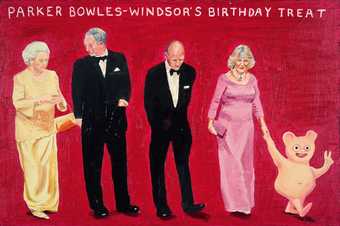The appearance of ‘sensitive’ photographic imagery in the public domain continues to stir debates about whether more controls should be put in place. Is it appropriate, for example, to print in a magazine the CCTV footage of two-year-old Jamie Bulger being led away to his death, particularly at a time when one of his killers recently re-emerged in the media headlines? And how should an art gallery censor which images may be deemed offensive? While CCTV footage, passive as it is, can unwittingly capture a problematic event, photographers select their subject. Tate Modern’s exhibition Exposed: Voyeurism, Surveillance and the Camera reminds us how tortured the relationship between photography and privacy remains. Often there is a potential political dimension to this too, as can be seen in, say, Trevor Paglen’s explorations of secret military infrastructures or Jonathan Olley’s photographs of fortified police towers in Northern Ireland.
Photographers rightly assert their rights to photograph in public places in the face of increasing restrictions, but how about cartoons? The boundaries of acceptability have often been tested – two recent examples being the cartoon in the Danish paper Jyllands-Postern depicting the Prophet Muhammed with a bomb-shaped turban and New Yorker magazine’s cover with Barack Obama in Muslim garb. Ironically, the outcries can lead to re-enforcing the stereotyping of the subjects that the critics try to protect. Such is the power of satire. Can we now, taking a more mundane example, imagine John Major without thinking about Steve Bell’s cartoons? As was shown in Tate Britain’s survey exhibition Rude Britannia: British Comic Art, satire has a habit of going for the jugular. The eighteenth-century caricaturist James Gillray was persistently vitriolic towards royalty and parliament, and his prints make today’s practitioners appear tame by comparison. Luckily for Gillray, George III’s reaction to many of his works was simply ‘I don’t understand’. If only things were so simple now.
Bice Curiger and Simon Grant


